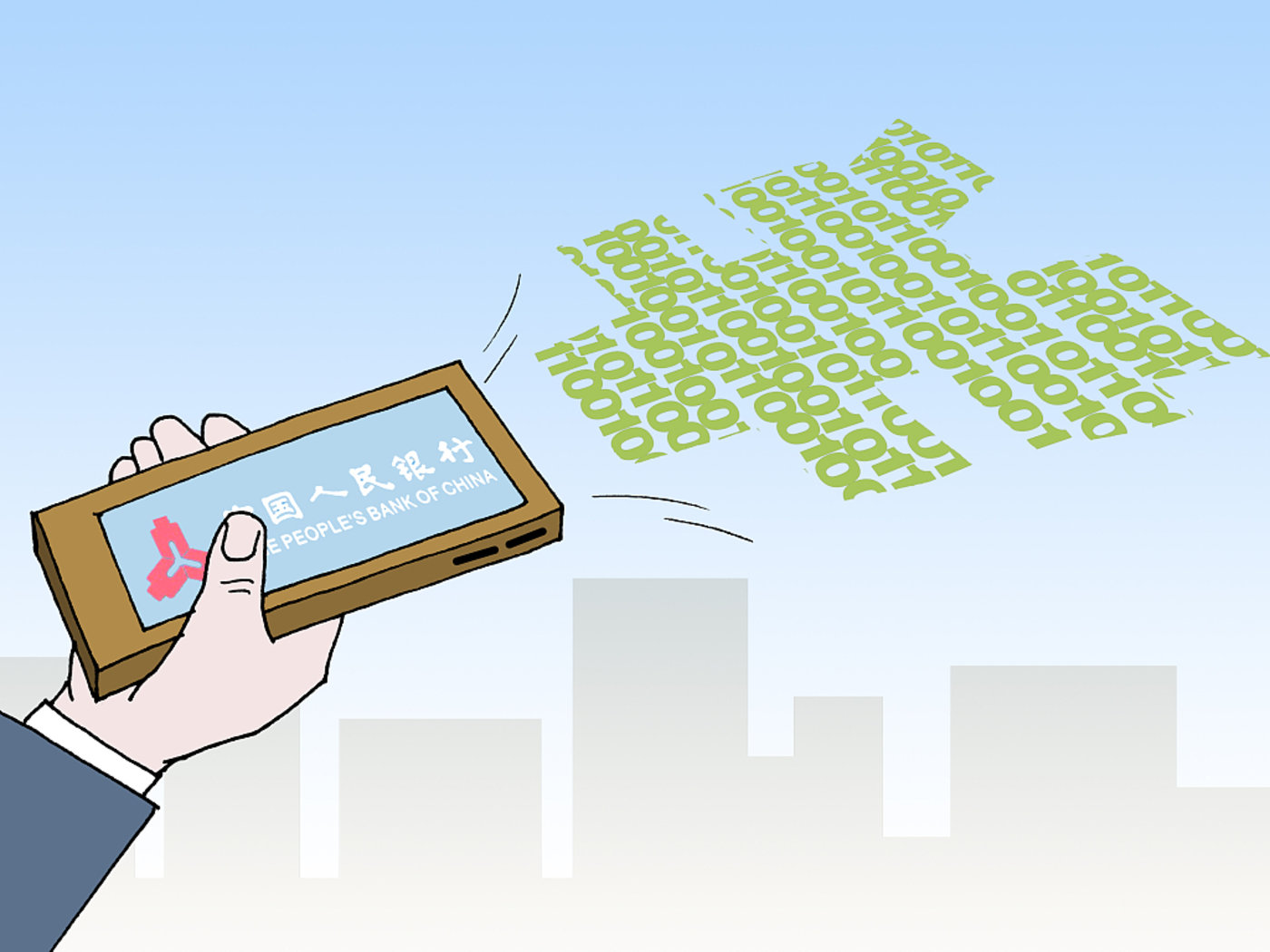原标题:Deconstructing the Central Bank's Digital Currency: Closer to Individuals But Farther Away From Blockchain 来源:链得得

Credit: VCG/Contributor
Mu Changchun, deputy director of the Payment and Settlement Department of the People's Bank of China, gave a detailed introduction to China's central bank digital currency (CBDC) at the 3rd China Financial Forty Forum. According to Mu, the institution's virtual currency is "almost ready" for release after five years of research.
This series of articles, by commenting on several key points in this speech, are based on my long-term thinking on the central bank's digital currency and even some practice, hoping to make more people have a deeper understanding on the central bank's digital currency and establish some basic concepts about its future impact on our daily lives. At the same time, some analysis and suggestions are given on the possible problems of the central bank's digital currency at the issue, operation and technology level. This article is the first one of the whole series, focusing on what the central bank's digital currency system will look like.
1. Operation centralization and technology encryption
"If the legal digital currency wants to reach the retail level, high concurrency is unavoidable." "The net connection dealings peaked at 92,771 per second on 11 November last year." "The digital currency was issued in a big country like China, and using pure blockchain architecture is not able to achieve the high concurrency performance required by retail." All of these statements highlight the central bank's positioning for CBDC's performance. In terms of form, "the central bank's digital currency adopts the method of 'lost account coupling', which means the value transfer without the traditional bank account is realized, and the transaction link is greatly reduced in terms of account dependence." "So our DC/EP design has been maintained the properties and main features of cash and meets the needs of portability and anonymity. It can be considered as a good tool for replacing cash, showing the characteristics of electronic cash or 'M0 replacement'."
The implication is that people should be able to use the central bank's digital currency (out of bank accounts) like the digital currency on the blockchain, but they must be able to meet the daily trading needs of the country, such as "shopping on 11 November is not blocked". These two requirements basically limit the form of the central bank's digital currency system: a centralized system that uses some kind of blockchain encryption technology.
2. "Networking app" is coming out?
How will this system develop in the end? Who will build it? I put forward an idea: the development of a "networking app" can basically achieve the goal.
According to the central bank's official statement mentioned above, the network's transactions on 11 November last year peaked more than 90,000 per second, while Alipay's peak value was 256,000 per second.
Considering the volume of Alipay, online transactions and all third-party payments are in the same level (the difference in number is caused by the difference between the payment scenario and the clearing scenario). It can be seen that the network association should realize the case-by-case liquidation, which inevitably is to build accounts on a case-by-case basis. Therefore, the network is actually a system that is independent of all banks and payment institutions, but has established an "account" for each individual and each merchant in China, and manages its transactions and balances. In this way, its system only needs to "copy" an account and change its implementation mechanism to a public/private key system. It is like the account system such as Ethereum and all the capabilities required by the central bank's digital currency can be realized, which is amazing.
"Copying" an account mentioned above seems not make sense - if it's a simple copy, it doesn't make any difference to build a completely new system, so why not to take responsibilities separately with one in charge of MO and another one in charge of payment system? However, there is one thing to consider: due to the provision of services to the payment system, the account system of the network must have well supported the regulatory requirements of KYC, AML and ATF. If the digital currency based on public/private key system wants to achieve this regulatory requirement, it is necessary to establish the relationship between the public/private key account and the individual identity. This is also the standard way for us to implement asset management on the chain for a long time and the best practices for limited anonymity.
In this case, if the digital currency system is completely separated from the online account system, it will inevitably face the risk that the identity information may be out of sync, and the changes need to be modified multiple times. Therefore, establishing a digital currency account in the network, rather than building a new system, is indeed a viable and relatively optimized solution. (There is another possibility that the network is limited to the upper-layer payment application, and has not implemented KYC functions internally. If so, the digital currency issuance and payment application can smoothly establish personal information in the system. And through the functions of recharge, withdrawal and other functions the association of payment accounts can be achieved. It is precisely what the central bank wants, and it is even more important to decide to use the network to realize digital currency.)
Of course, the emergence of "networking app" does not mean that we can only use this "CBDC wallet". I believe that the first to support digital currency is still bank online banking and payment applications. The central bank has clearly stated that the digital currency adopts a "two-tier operation" system, which must first be issued by banks to individual units, and the situation in which the central bank will fight the world will not happen. Therefore, even if the network has really developed the app, it can only exist as a third-party independent digital currency wallet app, rather than the only authorized digital currency payment tool designated by the central bank.
The mainstream model must be a "digital currency module" for online banking and various payment applications of various banks, in which direct payment of digital currency as well as "recharge" and "cash-out" of digital currency and in-app accounts can be completed. Because I have been engaged in the development of this kind of "account system + digital currency system" for a long time, it is relatively inclined that this model will become the mainstream form of the future payment system. At this time, the digital currency system assumes the responsibility of serving financial institutions, and is closer to the existing operation mode of the network. Therefore, no matter what the client version looks like, a system that serves both the C and B terminals derived from the network is more and more like an effective choice.
3. Offline payment "killer"
Since the central bank's digital currency is positioned as electronic cash (M0 replacement), it is reasonable to say that offline payment is the main purpose, but it is itself a kind of online payment technology. Isn't this a bit contradictory? In fact, it is not contradictory at all. Since I have been engaged in system development for a long time, I can say something based on my experience.
First of all, the online shopping category is generally linked to the consumer scene: customer identity, merchandise, orders and other information, which are closely related to payment. Since online payment is highly concurrent, if there is no 100% accurate consumption information and payment information matching, it can be regarded useless. From my practice, in order to realize the payment and application of the public/private key system, the scalable client and the background should be implemented more or less. This depends on how much scalability is reserved for this by the central bank digital currency system. Considering that the main purpose of CBDC is M0 replacement, we can't expect too much. What we can do is only to wait for technical details turning out, so that we can evaluate whether it is suitable for online payment.
On the contrary, offline payment is often a one-to-one, exclusive scenario. It is a model of "paying and delivering at the same time", so it is not necessary to accurately link the consumption information with the payment information to determine the payment success and the payer identity. Therefore, the digital currency system using the public/private key model can be supported without modification or small expansion, which is also what electronic cash requires.
Further considering the requirements of semi-anonymity and user privacy protection, the use of independent third-party app in online payment scenarios is more conducive to achieving this goal than using online banking and payment applications. Therefore, regardless of the network or other third-party independent central bank digital currency wallet applications, it will become a competitive solution in the online payment scenario, posing an important challenge to the current development of offline payment including WeChat, Alipay, etc. I believe that this is also a relatively important point in the central bank's digital currency.
To sum up, the central bank's digital currency system will be a centralized, electronic cash system that uses public/private key encryption technology to implement the off-account system. Mobile online banking and payment applications can support CBDC. In addition to these, there will be third-party independent applications such as a "network app". They will all be the digital wallet authorized by the central bank, but they will not be the only official payment tools designated. These payment instruments will mainly meet the offline payment scenario through the support of the central bank's digital currency.
Generally speaking, the design of the central bank's digital currency has its own features, so do other personal-oriented digital currency systems such as public-chain and Libra, and technical systems that realize clearing and settlement between financial institutions based on blockchain such as J.P. Morgan. Therefore, I summarize it as one sentence - It is closer to the individuals and farther away from the blockchain.
-----------------------------------------------
This article was translated by ChianDD, the original Chinese version was written by Wei Wang.
热门推荐
收起
24小时滚动播报最新的财经资讯和视频,更多粉丝福利扫描二维码关注(sinafinance)








